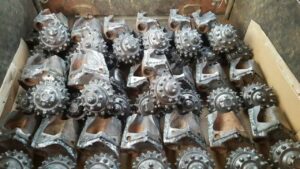Introduction
Effective cooling methods are essential in drilling operations to maintain drill bit performance and extend its lifespan. Excessive heat can lead to accelerated wear and even failure. This article explores innovative cooling methods for drill bits, focusing on their principles, advantages, and applications in the field.
Conventional Cooling Techniques
Traditionally, drilling fluids serve as the primary cooling method for drill bits. These fluids circulate around the bit, absorbing heat and removing cuttings from the wellbore. However, traditional methods may not provide sufficient cooling under extreme drilling conditions. As a result, the industry is exploring more advanced techniques.
Active Cooling Systems
Active cooling systems are gaining popularity in modern drilling operations. These systems involve the use of external cooling sources, such as cooling jackets or heat exchangers. They actively lower the temperature of the drill bit during operation, ensuring optimal performance. These systems can be particularly effective in high-temperature environments, where traditional cooling methods fall short.
Cryogenic Cooling
Cryogenic cooling is an innovative technique that involves the use of cryogenic fluids, such as liquid nitrogen, to cool drill bits. This method significantly lowers the temperature, enhancing the performance of the bit. Cryogenic cooling can reduce thermal wear, increase hardness, and extend bit life. However, its implementation requires careful consideration of safety and logistics.
Nanofluid Technology
Nanofluid technology involves the use of nanomaterials in drilling fluids to enhance cooling efficiency. Nanofluids have superior thermal conductivity compared to conventional fluids. By incorporating nanoparticles, these fluids can effectively transfer heat away from the drill bit, maintaining optimal operating temperatures. Research indicates that nanofluids can significantly improve drilling performance.
Conclusion
Innovative cooling methods are essential for improving drill bit performance and longevity. As drilling conditions become more extreme, the industry must continue to explore and implement advanced cooling techniques. By adopting these innovative cooling methods, operators can enhance efficiency, reduce wear, and lower operational costs.


